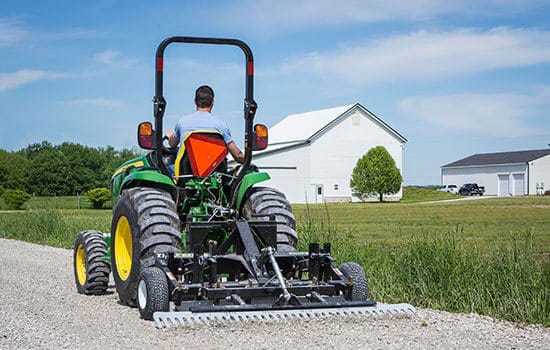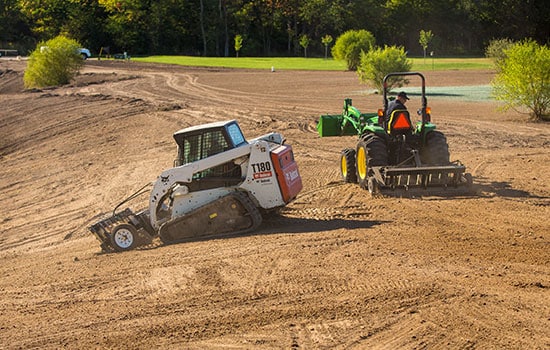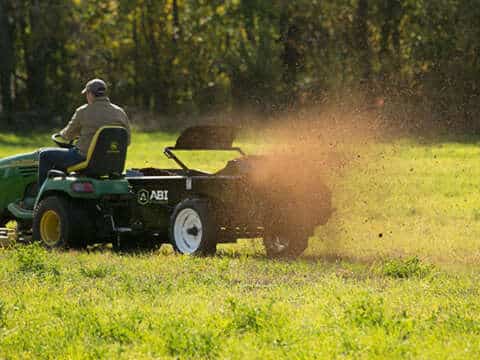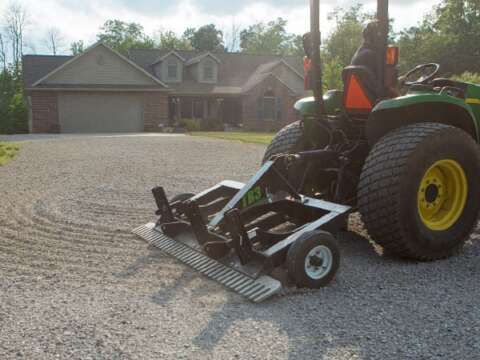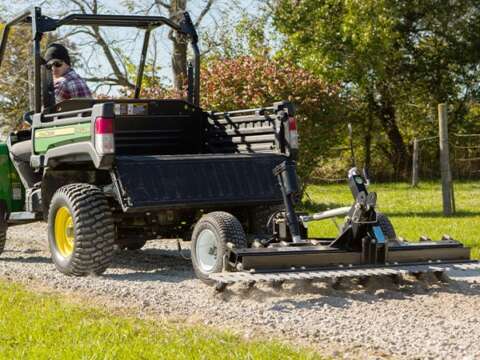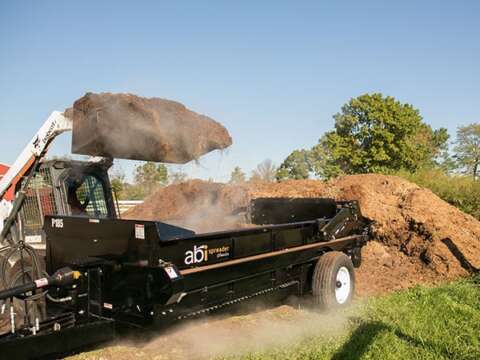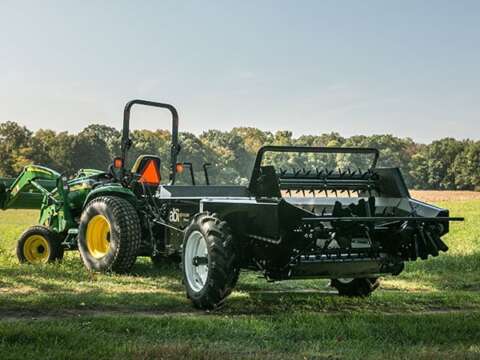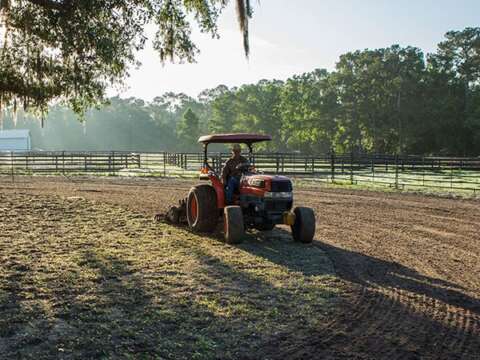
What Size Manure Spreader Do I Need?
Choosing the right manure spreader size makes your jobs safer, easier, and more efficient. Many people calculate the size they need based on their livestock headcount, but that’s not the most precise way to determine the best manure spreader size for you.
Here’s what we recommend thinking about when shopping for a manure spreader.
Consider Your Tow Vehicle
The size of your manure spreader depends on the capacity of your towing vehicle.
Generally speaking, the heavier the tow vehicle’s weight, the larger the spreader you can safely pull–especially on hilly terrain. Also, a tractor with a PTO (Power Take-Off) enables the use of larger PTO-style manure spreaders.
If you own multiple tow vehicles, size your manure spreader based on the tow vehicle that will be the most convenient to use, not the largest one you own. ATVs and UTVs are popular tow vehicles since they’re accessible and easy to operate.
Assess Your Manure Production
If you get to choose any tow vehicle you want, base the size of manure spreader you need on your livestock manure production volume.
Determining the daily manure production volume of the livestock on your property is a challenge, but it works.
TIP
How To Calculate Manure Production
Calculate an estimate of the daily cubic foot (ft³) production of manure for all livestock on your property. Below are average manure production rates per livestock type to help you determine your total per day manure production.
Add Stall Bedding Waste
If livestock are kept in stalls, allow for bedding waste, which typically equals twice the manure volume. 0.96 ft³ of manure would also have 1.92 ft³ of bedding for a total of 2.88 ft³ of manure per day. Multiply manure volume by 3. Manure Production * 3 = Total Manure & Bedding
Manure Production Examples
- 1 Stall-kept Horse Example: 0.96 ft³ (Horse Manure) * 3 (Bedding Waste) = 2.88 ft³ per day (Total Manure & Bedding)
- 4 Stall-kept Horses Example: 0.96 ft³ (Horse Manure) * 4 (# Of Horses) = 3.84 ft³ (Total Manure) * 3 (Bedding Waste) = 11.52 ft³ per day (Total Manure & Bedding)
- 4 Stall-kept Horses – 50% Turnout Time Example: 0.96 ft³ (Horse Manure) * 4 (# Of Horses) = 3.84 ft³ (Total Manure) * 3 (Bedding Waste) = 11.52 ft³ per day (Total Manure & Bedding) – 50% (Turnout Time) = 5.76 ft³ per day
If your farm produces 15 ft³ of manure per day, you could purchase a 50 ft³ manure spreader and spread it every three or so days. 15 * 3 = 45 ft³. This sizing is excellent if you have an accessible nearby area to spread, but it may not be enough if you must travel a distance or only plan to spread a few times a year.
You can have us calculate your volume estimate by calling 877-788-7253.
Calculate Your Animals’ % Of Day In Stalls
The amount of time livestock spend in the barn in their stalls will significantly impact manure spreader capacity requirements. Stall bedding can add two times the manure volume to spreader capacity requirements. Stall bedding varieties and stall picking techniques will impact the bedding multiplier, but bedding does have a significant impact and should be considered.
One 1,200 pound stall-kept horse produces 2.88 ft³ of manure and bedding waste per day; however, if that horse is turned-out for 50% – 60% of the day, this will reduce the amount of manure and bedding collected by about the same percentage. 2.88 ft³ – 50% = 1.44 ft³ per day.
Seasonality and geographic location could also impact capacity considerations. If your winters are extremely cold or you bring your livestock in to avoid predators, you will have more stall-picked manure to spread.
Look at Your Manure Spreading Frequency and Distance
Spreading your manure weekly or monthly? A smaller spreader might work for you. However, if you’re only spreading your manure a few times per year, try a larger spreader to cover more ground quickly.
Larger manure spreaders are best for properties with a large distance to cover while small spreaders are handy for more condensed areas.
Evaluate Your Spreading Location
Will you be spreading manure on forage pastures, hayfields, crop fields, or a mixture of all three? Where you plan to spread does impact what size of manure spreader is best for the job.
Because these pastures are often fertilized during rotational “rest” periods, they’re spread on more frequently. Smaller manure spreaders can make it more convenient to prep, zip around your location, and spread.
Hayfields are only spread on after they’re cut. Since they don’t require frequent spreading, one pass with a larger spreader is often easier.
Like hayfields, crop fields aren’t spread on regularly. The best time to spread on crop fields are in spring before cultivation and in the fall after harvest. Larger spreaders can be a great fit for spreading on crop fields since you only have to work with them twice per year.
If you spread on a mixture of all three location types, talk to one of our product specialists. We love helping people find the best solution for their lifestyle.
Think About How You’ll Be Loading The Spreader
Smaller manure spreaders are easier to load by hand. If you plan to pull the spreader into the barn while you pick your stalls, you’ll need a small manure spreader that can navigate the barn by your side.
Larger manure spreaders are better if you store manure in piles and load it with a loader bucket. Make sure your spreader is longer than your loader bucket width to avoid overspill into the mechanics of the spreader.
Which Size Manure Spreader Should I Choose?
Take a look at our manure spreader comparison guide, shop our full line of manure spreaders for sale, or get your customized answer by giving our products specialists a call at 877-788-7253.
Related Blog Posts
Related Videos
Compare and Contrast
Not sure what you’re looking for? Take a look at our manure spreader comparison guide, then talk to an ABI rep to find your fit.
New To Manure Spreading? We’ve Got Your Back.
Get our Animal Manure Management Guide for 5 Keys to a



